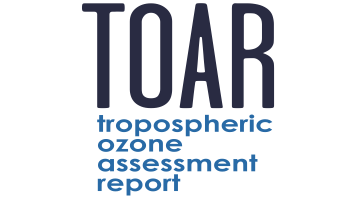Tropospheric Ozone Assessment Report (TOAR): Global metrics for climate change, human health and crop/ecosystem research
News:
TOAR completed its first phase in 2019 and the second phase (TOAR-II) has begun. To learn more about the goals of TOAR-II, and to get involved, please follow the link to the TOAR-II webpage, which can be found in the left-hand menu bar.
Mission:
TOAR’s mission is to provide the research community with an up-to-date scientific assessment of tropospheric ozone’s global distribution and trends from the surface to the tropopause. This includes the production of tropospheric ozone assessment reports based on the peer-reviewed literature and new analyses as well as the provision of easily accessible, documented data on ozone mixing ratios, exposure and dose metrics at thousands of measurement sites around the world, and links to quality assessed data sources of free tropospheric ozone at the TOAR data portal. All TOAR data are freely accessible for research on the global-scale impact of ozone on climate, human health and crop/ecosystem productivity.
Organization:
TOAR is a science effort initiated by IGAC, and developed by an international team of more than 200 experts from over 35 countries. TOAR receives financial and logistical support from IGAC, Forschungszentrum Jülich, the US National Oceanic and Atmospheric Administration, and the World Meteorological Organization (an agency of the United Nations).
Achievements, plans, and ongoing work:
As of February 2020, TOAR entered its second phase and is now preparing to launch an updated tropospheric ozone assessment. For details, see TOAR Phase-II . The first phase of TOAR has achieved its two main objectives, namely a set of 8 peer-reviewed publications (Elementa special feature), and a web-accessible database of surface ozone observations (https://join.fz-juelich.de). For details, see TOAR Phase-I.
TOAR data and tools:
- TOAR Data Portal: https://toar-data.org
- TOAR surface ozone database web interface: https://join.fz-juelich.de
- TOAR surface ozone metrics data compilations and plots: https://doi.org/10.1594/PANGAEA.876108
- Git repository with python software to access TOAR surface ozone data: https://jugit.fz-juelich.de/m.schultz/toar-public-utilities
